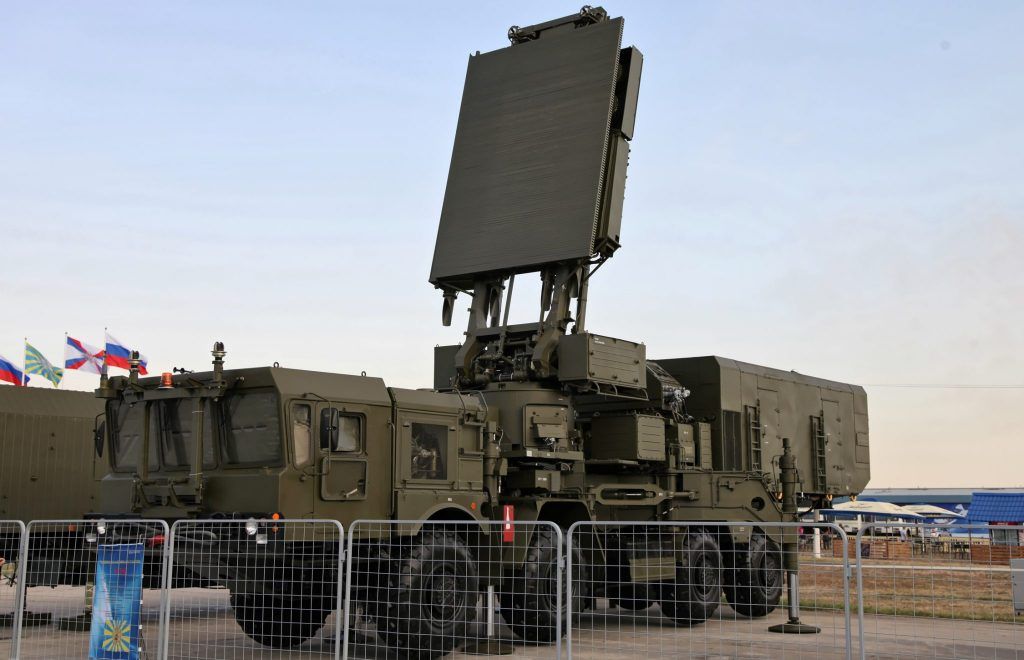The international significance of Russian aerospace defenses
By Ivanka Barzashka | December 20, 2018
 Russian air defense systems. Credit: Vitaly V. Kuzmin CC BY-SA 4.0 via Wikimedia Commons
Russian air defense systems. Credit: Vitaly V. Kuzmin CC BY-SA 4.0 via Wikimedia Commons
Ask any US policymaker and strategic studies scholar, “What is the most important component of Russia’s military strategy?” and you will get an unequivocal answer: nuclear weapons. Ask that expert, “What is the second most important component?” and you will get a cloudier response: Information warfare? Dual-capable cruise missiles? You may just get silence.
Russian officials and military planners, however, are clear on the issue. President Vladimir Putin called the answer “well known” among them. Yet while Russia has been publicly developing, testing, and fielding this key component, US strategic debates have largely ignored it.
The second most important component to Russia’s defense strategy is its aerospace defense system, one explicitly designed to counter the United States and its European allies. According to Putin, the aerospace defense system, together with the country’s nuclear weapons, has a “special responsibility” for ensuring Russian security.
Western media has paid some attention to specific Russian weapons technologies such as the S-400s in Syria. And US analysts have begun to re-examine the regional implications of these extended air defense systems to counter aircraft and cruise missiles, part of Russia’s growing anti-access area-denial capability.
But Russia is developing a greater aerospace defense system than the S-400s it has deployed in Syria and around NATO’s periphery. The Kremlin is not simply modernizing the Soviet-era nuclear-tipped missile defenses around Moscow: The new aerospace defense system aims to integrate air defense, missile defense, anti-satellite capabilities, and electronic warfare.
These developments have both regional and strategic significance. They affect not just nuclear deterrence and strategic stability, but also strategic deterrence and conventional warfighting. They impact how Russia can project power and define its global role.
Since 2014, Putin has clearly and repeatedly acknowledged the “great importance” of Russia’s aerospace forces in “maintaining global and regional balance and stability,” an importance second only to Russia’s strategic nuclear forces. He has frequently stated that “strategic parity and the balance of power” depend to a “great extent” on the aerospace defense forces. The country’s national defense budget also makes clear how significant these forces are to Russian military strategy.
Russia deployed limited defenses against US nuclear missiles during the Cold War. The country began making major changes in its aerospace defense posture beginning in 2001 when the United States withdrew from the 1972 Anti-Ballistic Missile Treaty, which limited defense deployments. After becoming pessimistic about the prospects of missile defense cooperation with NATO, Russian leaders in 2011 began intensifying efforts to develop the country’s aerospace forces. They made significant organizational changes to these forces in 2015 that enabled the country’s military operations in Syria.
The integration of offensive and defensive capabilities is a cornerstone of Russian military strategy, a concept that pertains in both nuclear and non-nuclear dimensions. Today, the aerospace defense system helps provide solutions to three existing and evolving strategic problems facing Russia’s leadership.
First, Russian defenses would mitigate the strategic risk of a nuclear or non-nuclear aerospace attack by the United States or other major powers. They would strengthen Russia’s strategic deterrence. In other words, Russian military planners seek to limit the damage of potential US nuclear and conventional attacks against the country’s strategic nuclear forces. The planners also want to deny the United States and NATO conventional military superiority in conflicts on Russia’s periphery.
Second, defenses underwrite Moscow’s ambitions to play a major role in the world by delivering warfighting capabilities. Russia’s defense systems provide what its strategists call “non-nuclear deterrence” against US actions that might oppose Russian strategic objectives and operations. Russia’s military forces gain freedom of action and are able to provide military support for Syrian President Bashar al Assad.
Third, defenses help Russia influence global affairs through non-military means by providing political leverage. Russia’s sales of S-400 extended air defense systems to Turkey, a NATO member, have increased tension between the United States and its NATO ally. Moscow has advanced missile defense sales and cooperation with China as part of an effort to “oppose the development of a global anti-missile system” by the United States and its allies and also to “protect both countries’ security as well as the regional strategic balance.”
By helping cumulatively meet these challenges, Russian leaders perceive aerospace defense as contributing to strategic stability, which they claim has been eroding since the collapse of the Soviet Union thanks to American unilateralism, military dominance, and new weapons development.
Why have US strategic debates overlooked the significance of Russian aerospace defense? One explanation is mirror imaging. The United States never permanently deployed a missile defense system against Russia, even during the Cold War. US defenses against sophisticated Russian nuclear missiles have since been seen as destabilizing, costly, and technologically unreliable. In 2001 the United States turned to missile defenses as a solution to the then-new strategic problems of a nuclear-armed North Korea and a nuclear-arming Iran. Since then, the United States has designed its missile defense system, including its NATO, South Korean, and Japanese components, to counter regional actors, not major powers. The Trump administration may change this policy in the still-pending Missile Defense Review.
There is still consensus in the United States and Europe that Russian missile defense, now part of the larger aerospace defense system, does not affect strategic stability with the United States or, by extension, with European nuclear powers.
But Russia’s aerospace defense system has implications for US and NATO strategy. It affects strategic stability broadly defined and should be an explicit factor in debates on arms control, strategic deterrence, and competition. Strategists should weigh it in debates on nuclear and missile defense strategy.
When you next have a seat at the table, please ask, “What are the implications of the second most important component to Russian defense strategy?”
Together, we make the world safer.
The Bulletin elevates expert voices above the noise. But as an independent nonprofit organization, our operations depend on the support of readers like you. Help us continue to deliver quality journalism that holds leaders accountable. Your support of our work at any level is important. In return, we promise our coverage will be understandable, influential, vigilant, solution-oriented, and fair-minded. Together we can make a difference.
Keywords: Anti-Ballistic Missile Treaty, NATO, Russia, Syria, United States, aerospace defense, missiles
Topics: Disruptive Technologies, Nuclear Risk















If it’s anything like US “missile defense”, then it is just barely worthy of consideration. So far, bmd systems have next to zero real world capability, even against a single missile.